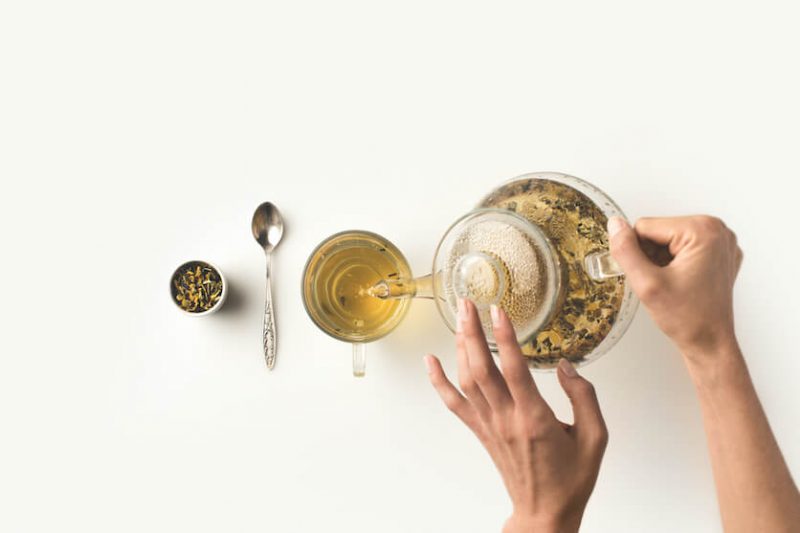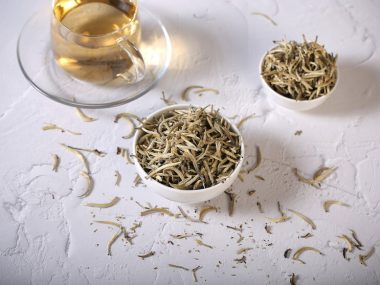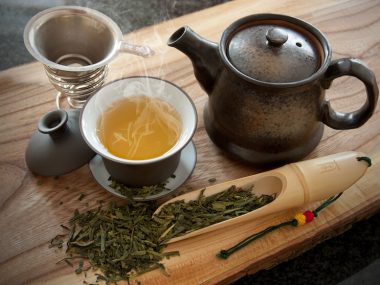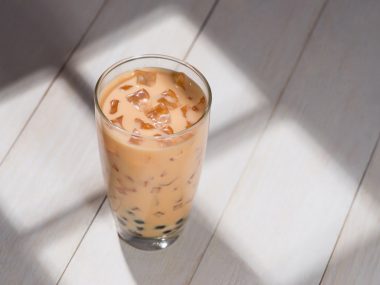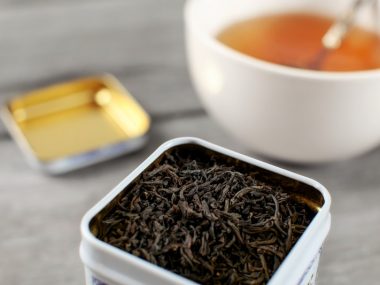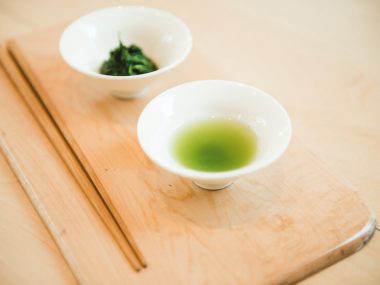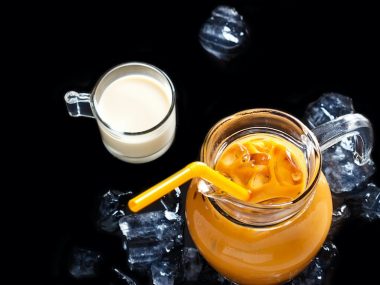If you thought pu-erh tea was the Rolls Royce of true teas, you are in for a real treat! We have a tea for you that is very limited and rare. In fact, counterfeiters in tea retail try to pass off other tea as the real deal. Learn more about the “liquid gold” aka the yellow tea.
Table of Contents
What Is Yellow Tea?
Yellow tea (known as “Huangcha” in China) is one of several true teas. True teas consist of black, green, yellow, oolong, and white. All of these teas come from the same tea plant called Camellia sinensis. These teas differ in terms of how they are grown, harvested, and processed.
Yellow tea is not only rare but there’s very little research done on it compared to green or black tea. Because of its precious rarity, many of us don’t really know a whole lot about yellow tea.
What Is Yellow Tea Made Of?
Yellow tea is made from the tea plant (Camellia sinensis.) After the tea leaves are harvested, they are processed and go on for further processing called fermentation. This tea is not grown in any other part of the world and is exclusive to China.
Different Types Of Yellow Tea
There are only a few types of yellow tea produced. There’s only one origin for yellow teas, and that’s China.
- Junshan Silver Needle (Hunan Province)
- The highest-grade yellow tea
- Taste: sweet, bright, mellow, clean
- Tea Soup Color: clear yellow
- Huo Shan Huang Ya (Anhui Province)
- Taste: nutty, sweet
- Tea Soup Color: very pale, clear yellow
- Meng Ding Huang Ya (Sichuan Province)
- Taste: grassy, nutty, sweet
- Tea Soup Color: very pale, clear yellow
- Huang Tang (Zhejiang Province)
- Taste: nutty, floral
- Tea Soup Color: pale yellow
- Mogan Yellow (Zhejiang Province)
- Taste: mellow and smooth
- Tea Soup Color: yellow
The Yellow Tea Culture Of China
There are two notable areas in China where yellow tea is the mainstay of the economy and community. Yueyang City, China (known as the hometown of yellow tea) is the epicenter of China’s yellow tea. It’s here that yellow tea is processed and exported to the global tea market.
Wuhan, China is another area worthy of mentioning. Wuhan has the highest concentration of yellow tea drinkers than any other area in China.
Other Teas That Are Yellow In Color
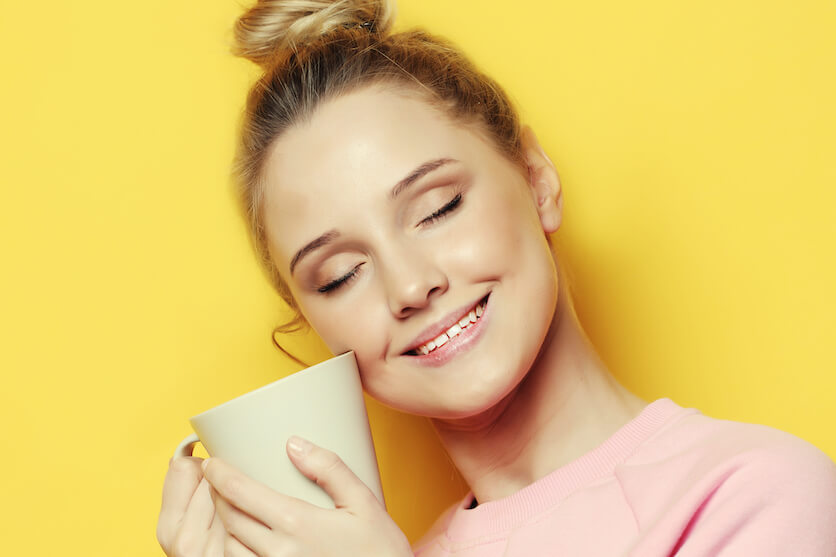
It’s easy to confuse yellow-colored teas as being a true yellow tea. However, tisanes (herbal tea) and other true teas (some green, oolong, or white) may have a yellow hue. Unless you are well-versed in all of the different teas, mistaking the wrong tea because of its color is very common. To help you better understand those “other” teas that are often mistaken as true yellow tea, we will look at a few.
Green Teas That Appear Yellow
Green tea is a true tea. It gets confusing when a green tea turns out to be yellow in your teacup. This is not unusual. That yellow color is caused by how a particular green tea is processed. For example, green teas in China will have a different color than those in Japan.
Chinese Green and White Tea
Most Chinese green tea is pan-fried or baked. This processing method causes a shift in the chemical makeup of the tea leaves, causing them to appear more yellow when brewing. Some of these teas include Gunpowder, Jasmine, Dragonwell, and many of their white teas.
Japanese Green Tea
So, why aren’t green teas from Japan yellow? The Japanese green teas undergo a different type of processing where the tea is steamed rather than pan-fried—steaming preserves the chlorophyll in the tea leaves, making the brewed tea greener.
Teas such as Tencha and Gyokuro are green. When you look at Sencha, it has a deceiving color that might be yellowish-green. Sencha might be lightly or deeply steamed. The deeper the steaming, the more green it is. The lighter the steam, the more yellow it is.
Tisanes That Appear Yellow
This category of “yellow-colored” teas may have a vibrant yellow to a very clear pale yellow. Tisanes are herbal teas and are not considered a true tea (such as black, green, oolong, yellow, and white.) We have some tisanes that can easily fool you into thinking they are a true yellow tea just by color alone.
Yellow Root Tea
Yellow Root (Xanthorhiza simplicissima) is an herb used to treat a host of issues that include inflammation, infections, colds, and digestive upsets. It was also used as a mouthwash and to make tea.
Chrysanthemum Tea
Chrysanthemum tea is made from the flower we often associate with flower gardens (Chrysanthemum L.) There are numerous species of this plant, so you may have one tea that is more of a gold-yellow while others may be as bright as the yellow sun!
Lemongrass Tea
Lemongrass (Cymbopogon citratus) is a versatile herbaceous plant used in cooking and to make teas for various ailments. It is known for being an antibacterial, antidiarrheal, antifungal, and anti-inflammatory.
Chamomile Tea
Chamomile tea (Chamomilla recutita and Chamaemelum nobile) is a tisane that has been around for a very long time. It’s often consumed as a bedtime tea to relax and unwind or to help alleviate inflammation, digestive upsets, muscle spasms, and more.
Dandelion Tea
Dandelion tea (Taraxacum officinale) is another popular tisane common among those who drink herbal teas. This tea is purported to help nursing mothers produce more breastmilk and also act as a urinary health booster, and increase the appetite.
Why Is Yellow Tea So Rare?
The rarity of yellow tea is due to the very few tea farmers who grow it. It’s one of those teas that are only produced in small, limited batches due to it being extremely labor-intensive. During the processing phase, yellow tea must go through numerous steps, one of which is called “sealing yellow” (Men Huang.) This step is where the tea leaves are lightly steamed and are allowed to slightly oxidize and ferment. Next, the tea leaves are bunched into heaps and covered to remove the grassy, vegetal tastes.
You’ll be hard-pressed to find this tea in countries other than China, and if you do, it will fetch a pretty price. The amount of labor required to make this tea is not something tea farmers are willing to invest in. By having limited batches of yellow tea, quality control is better to ensure tea consumers get the very best.
How Much Caffeine Is In Yellow Tea?
Yellow tea has about 40-47 mg of caffeine in a six-ounce cup. This amount of caffeine is comparable to that of green or black tea.
What Is The Best Time To Drink Yellow Tea?
Because of the amount of caffeine in yellow tea, it’s best to enjoy it during the day rather than in the late afternoon or evening. The caffeine may cause you to have trouble getting to sleep.
Is It Okay To Drink Yellow Tea Every Day?
As with any other caffeinated beverage, our caffeine intake should not go beyond 400 mg per day. The FDA recommends a maximum daily intake of 400 mg of caffeine or less. You can enjoy about 4-6 cups of yellow tea a day, provided you are not sensitive to caffeine or have medical conditions, or take medication that may be affected by caffeine.
Which Is Better, Green Tea Or Yellow Tea?
Among the true teas (black, green, oolong, yellow, and white,) green tea has the highest amounts of phenols because of little to no processing. The more processed a tea is, the fewer benefits it will provide to us. This is not to say yellow tea lacks merit. On the contrary.
Yellow tea may not be packed with phenols as green tea is, but it’s one of those teas that warrant attention and recognition as being an exceptional tea to drink.
How To Make Yellow Tea
If you do happen to acquire this rare tea, brewing it should be done in a way to protect the integrity of the tea so you can experience all that yellow tea has to offer!
Ingredients
- 2 cups of water
- 2 teaspoons of loose-leaf yellow tea
Directions
- Heat the water until it reaches about 176 degrees (F) (80 degrees C.)
- Remove from the heat.
- Place the loose-leaf tea into a tea infuser and drop it into the teapot.
- Cover and allow the tea to steep for three minutes.
- Pour the tea into your teacup and enjoy!
Tip: Yellow tea pairs wonderfully with charcuterie foods such as cheeses, pears, and prosciutto.
A Tea Off The Beaten Path
Yellow tea is one of those teas you should try if you take that journey through different teas. Be careful to source your yellow tea through a reputable retailer, or you can buy it directly from tea farms in China. If it’s not the real deal, you may find you have nothing more than a cup of diluted unknown tea.
